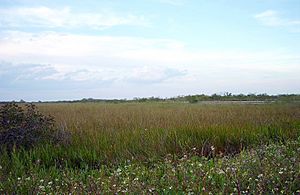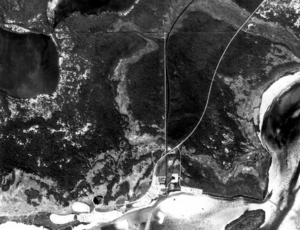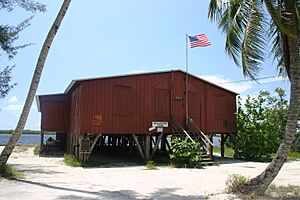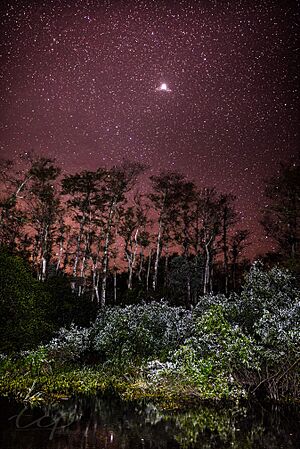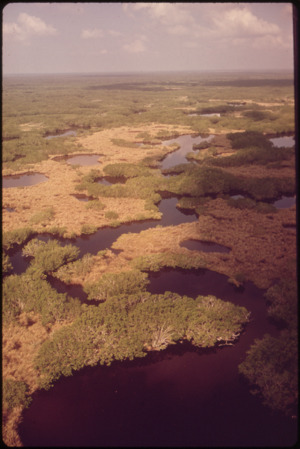National Register of Historic Places listings in Everglades National Park facts for kids
Everglades National Park in Florida is a special place, famous for its unique wetlands, wildlife, and plants. But did you know it's also home to important historical sites? These sites are listed on the National Register of Historic Places. This is an official list in the United States that recognizes places important to American history, architecture, archeology, engineering, or culture.
There are eleven places in Everglades National Park that are on this list. One of them is even a National Historic Landmark, which means it's considered extra important to the nation's history. These sites help us learn about the people who lived here long ago and how the park has changed over time.
Contents
Exploring Historic Places in Everglades National Park
Everglades National Park protects not just nature, but also amazing historical spots. These places tell stories about the past, from ancient Native American villages to important moments in more recent history.
The Anhinga Trail
The Anhinga Trail is a famous walking path in the park. It's known for being a great place to see wildlife like alligators, turtles, and many kinds of birds, including the anhinga bird it's named after. But it's also on the National Register of Historic Places because it's part of the park's important archeological areas. It shows how people have interacted with this unique environment for a very long time.
Mud Lake Canal
The Mud Lake Canal is a very special place because it's a National Historic Landmark. This means it's one of the most important historical sites in the entire country! The canal is located near Cape Sable in the park. It's an old canal that shows how people tried to change the landscape of the Everglades many years ago. It helps us understand the history of human activity in this wild area.
Nike Missile Site HM-69
Imagine a secret military base hidden in the middle of the Everglades! The Nike Missile Site HM-69 is a fascinating historical site from the Cold War era. During the Cold War, the United States built these missile sites to protect against possible attacks. This site was built to defend southern Florida and was active from 1964 to 1979. Today, you can visit it and see the missile bunkers and radar towers. It's like stepping back in time to a very tense period in history.
Ted Smallwood Store
The Ted Smallwood Store is a historic building located near the park, in a small community called Chokoloskee. This old general store was built in 1906 and served as a trading post for local residents, including Native Americans and early settlers. It was a vital part of the community for many years. Visiting the store today is like seeing a piece of old Florida history come to life, showing how people lived and traded in this remote area.
Ancient Archeological Districts
Many of the sites on the National Register in Everglades National Park are "archeological districts." This means they are areas where scientists have found evidence of ancient human life, like tools, pottery, or old village sites. These districts include:
- Bear Lake Mounds Archeological District
- Cane Patch
- Monroe Lake Archeological District
- Rookery Mound
- Shark River Slough Archeological District
- Ten Thousand Islands Archeological District
- Turner River Site
These places are very important because they help us learn about the Calusa people and other Native American groups who lived in the Everglades thousands of years ago. They show how these early people adapted to the unique environment, used its resources, and built their communities. Scientists study these sites carefully to understand the rich history of the Everglades before modern times.
Images for kids


